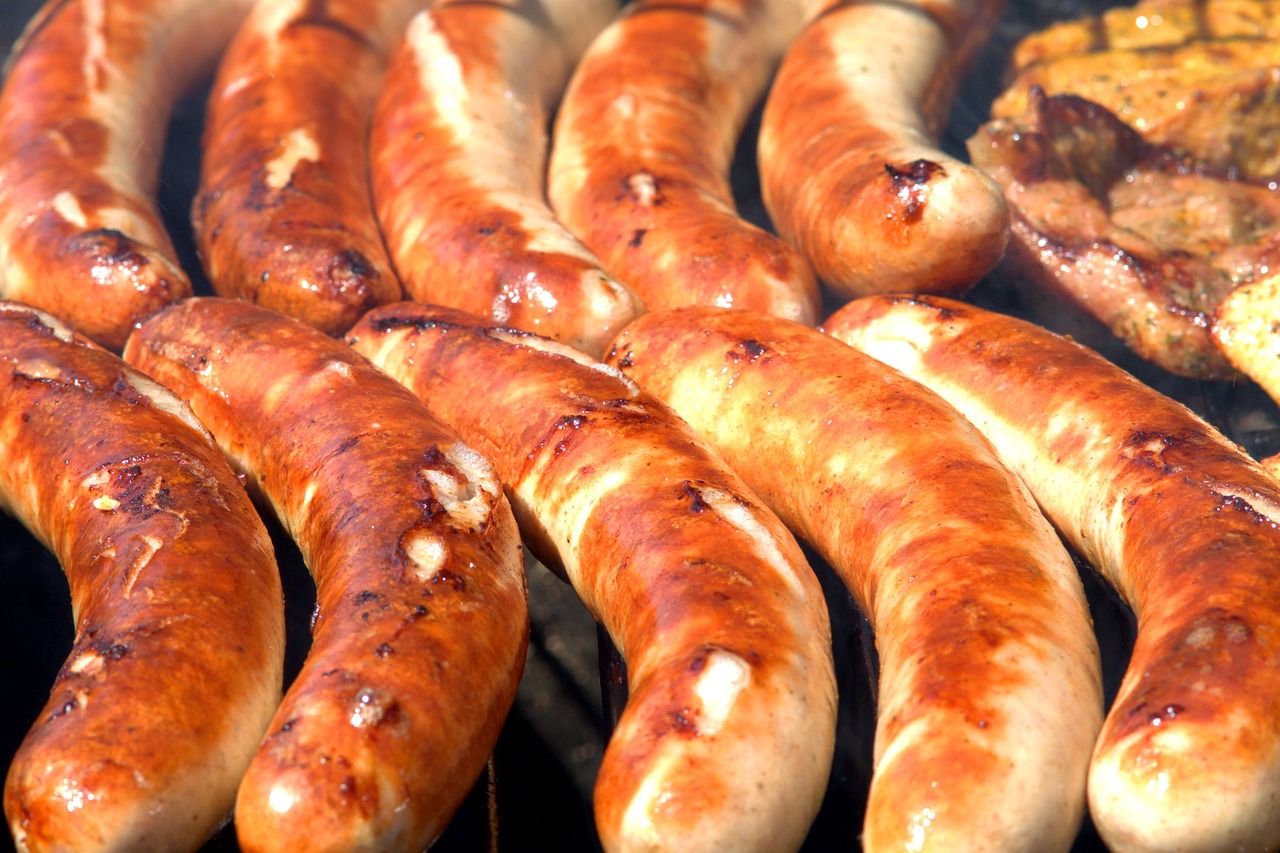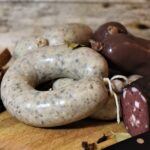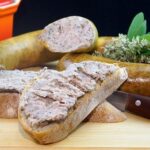
German cuisine is renowned for its hearty, flavorful dishes, and at the heart of this culinary tradition lies the Knackwurst. A type of German sausage known for its distinctive snap and rich flavor, Knackwurst is a staple in German festivals, beer gardens, and dinner tables. This article explores the history, preparation, and unique characteristics of German Knackwurst, offering insights into why this sausage is a must-try for any food enthusiast.
The History of German Knackwurst
Knackwurst, also known as “Knackwurst” or “Knackwurste,” dates back several centuries in German food history. Originating from the North German region, it has evolved over the years, integrating various regional spices and preparation methods. The name “Knackwurst” itself, which translates to “crack sausage,” derives from the audible snap or “knack” sound made when biting into its crisp casing.
Ingredients and Preparation
A traditional Knackwurst is made primarily from ground pork, though some variations include beef or veal. The meat is finely ground and seasoned with a blend of spices such as garlic, pepper, marjoram, and sometimes a hint of coriander or nutmeg. The mixture is then encased in natural casings and smoked over beechwood, giving the sausage its distinct smoky flavor and firm texture.
Culinary Uses
Knackwurst is incredibly versatile, making it a favorite in both traditional and modern German cuisine. It’s commonly served in a Brötchen (a crusty bread roll) with mustard, making for a classic German street food experience. Alternatively, it can be found in stews, paired with sauerkraut, or simply grilled and enjoyed with a side of potato salad. Its robust flavor also makes it a perfect complement to the malty and hoppy flavors of German beers.
Nutritional Information
While delicious, it’s important to consider the nutritional aspect of Knackwurst. Like many sausages, it is high in protein but also in fat and sodium. Moderation is key for those mindful of their dietary intake.
Regional Variations
Each region in Germany has its twist on Knackwurst. For example, in some parts of Bavaria, it’s made with a higher proportion of beef, while in other areas, different spice combinations are used, reflecting local tastes and traditions.
Pairings and Serving Suggestions
Pairing Knackwurst with the right sides and beverages enhances its flavor. Traditionally, it is served with German-style mustards, which range from sweet to spicy, and sides like sauerkraut or potato salad. When it comes to drinks, a classic German lager or a wheat beer complements the rich flavors of the sausage.
Cooking Tips
To fully enjoy Knackwurst, proper cooking is key. It’s typically boiled or grilled, with boiling being the more traditional method. When grilling, avoid high heat as it can split the casing and cause a loss of juices. For an authentic experience, simmer the sausage in water just below boiling before finishing it off on the grill for a crispy skin.
Ingredients
- 1 kg pork shoulder
- 500 g beef chuck
- 25 g kosher salt
- 5 g Prague Powder #1 (curing salt)
- 15 g garlic, minced
- 5 g ground white pepper
- 2 g ground allspice
- 2 g mace
- 100 g ice water
- Sausage casings (preferably natural hog casings)
Equipment
- Meat grinder
- Sausage stuffer
- Smoking apparatus (optional)
- Large mixing bowl
- Sharp knife
Preparation
- Meat Selection and Preparation: Begin by selecting high-quality pork shoulder and beef chuck. Cut the meat into small pieces that can fit into your meat grinder. Partially freeze the meat for about 30 minutes to make the grinding process easier.
- Grinding the Meat: Using a meat grinder, grind the pork and beef together. For a finer texture, you may grind the meat twice.
- Mixing the Ingredients: In a large bowl, combine the ground meat, salt, Prague Powder #1, minced garlic, white pepper, allspice, and mace. Mix thoroughly to ensure even distribution of the spices.
- Adding Ice Water: Gradually add ice water to the meat mixture. This helps in emulsifying the fat and distributing the spices evenly.
- Stuffing the Casings: Rinse the casings in cold water and then soak them in warm water for about 30 minutes. After soaking, thread the casing onto the sausage stuffer. Feed the meat mixture into the stuffer and fill the casings, being careful to avoid air pockets.
- Twisting into Sausages: Once the casing is filled, twist the sausage into 6-inch links. Pierce any air pockets with a pin.
- Cooking the Knackwurst: There are several ways to cook Knackwurst. It can be poached in simmering water for about 15 minutes, grilled, or smoked. For smoking, use a smoking apparatus and smoke at 155°F (68°C) for about 90 minutes.
Serving Suggestions
Serve your homemade Knackwurst with classic German sides like sauerkraut, potato salad, or soft pretzels. Mustard, particularly Dijon or whole grain, is an excellent condiment choice.
Storage and Preservation
Uncooked Knackwurst can be stored in the refrigerator for up to 2 days or in the freezer for up to 3 months. Cooked Knackwurst should be consumed within 3 days if refrigerated.
Conclusion
Making Knackwurst at home is a rewarding experience that brings the authentic taste of German cuisine to your kitchen. By following this recipe, you can enjoy a traditional German meal that’s both delicious and a testament to your culinary skills.
FAQs
- Can I use only pork or beef in this recipe? Yes, you can make Knackwurst with either pork or beef, but the traditional recipe uses a combination of both.
- What can I use if I don’t have Prague Powder #1? Prague Powder #1 is essential for curing and should not be substituted if you plan to smoke the sausages. For non-smoked versions, you can omit it.
- Can I cook Knackwurst in a pan? Yes, you can pan-fry Knackwurst over medium heat until thoroughly cooked.
- Is it necessary to use natural casings? While natural casings are traditional and give the best flavor and texture, you can use synthetic casings as an alternative.
- How do I know when the Knackwurst is cooked? The sausage should reach an internal temperature of 160°F (71°C) to be considered fully cooked.
Related Recipes:
German Wurst Guide
German Blutwurst Recipe
Liverwurst
Bratwurst
Classical German Sausage
German Sausage with Apples Sauerkraut and Onion
German Sausage Soup







